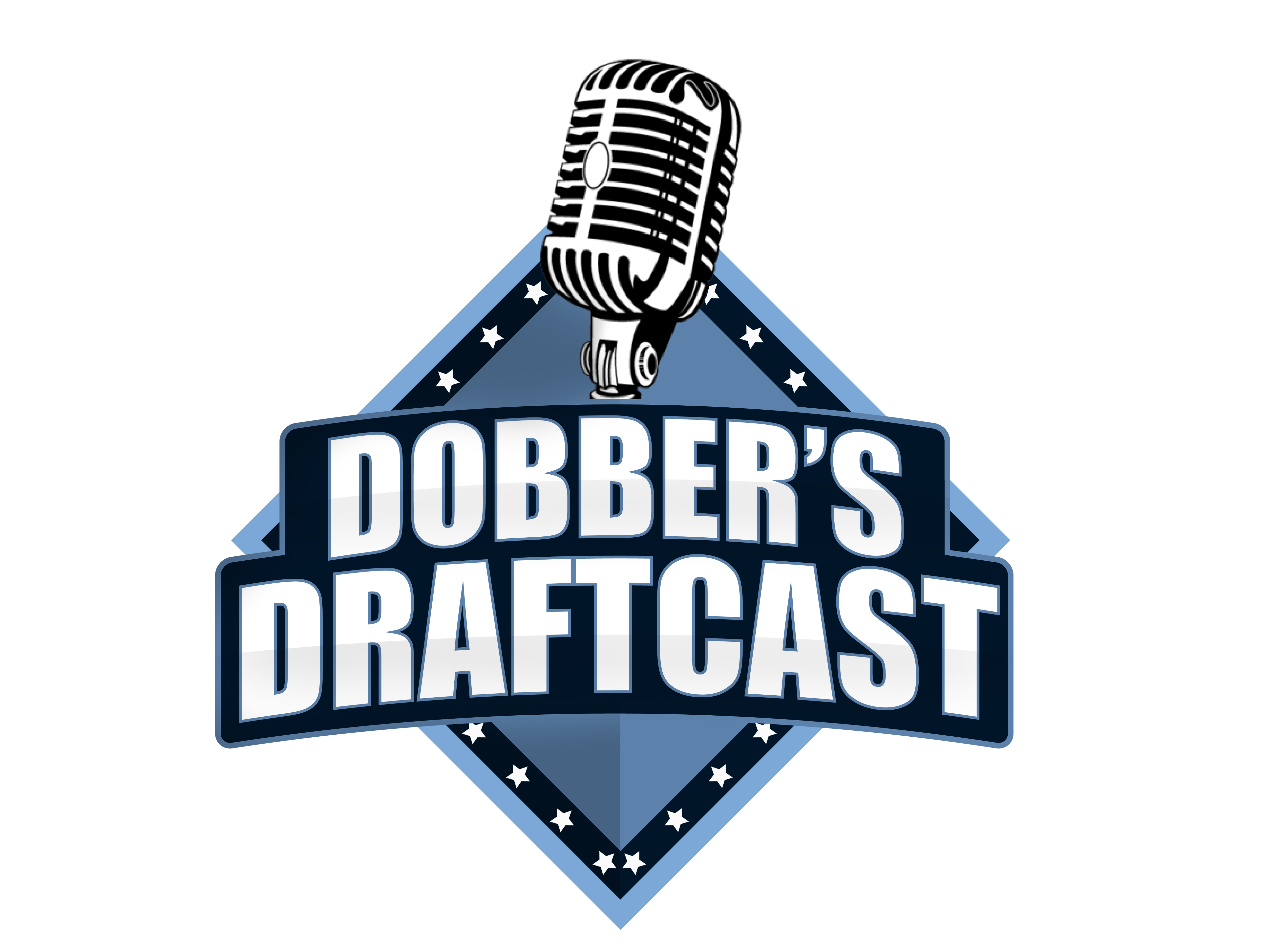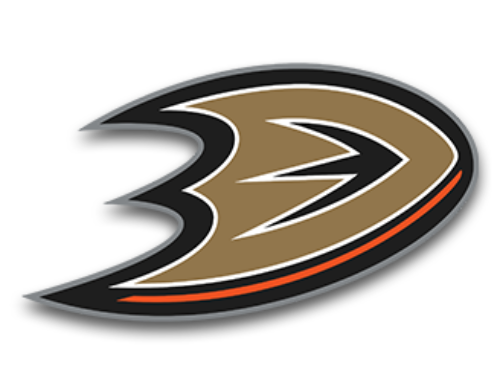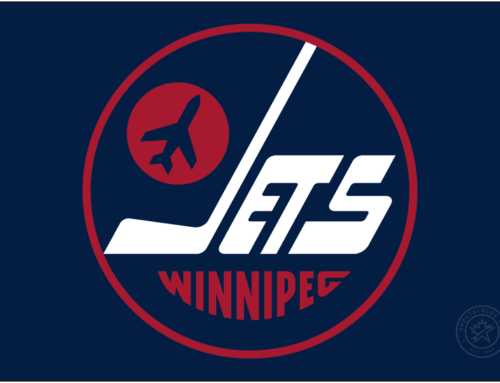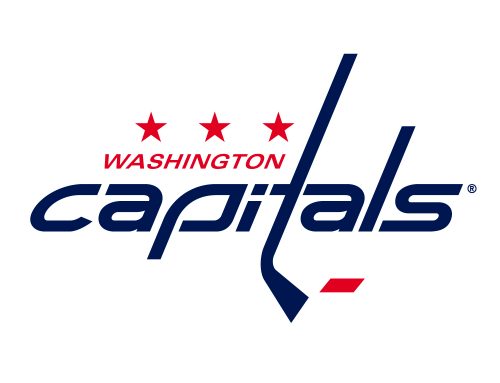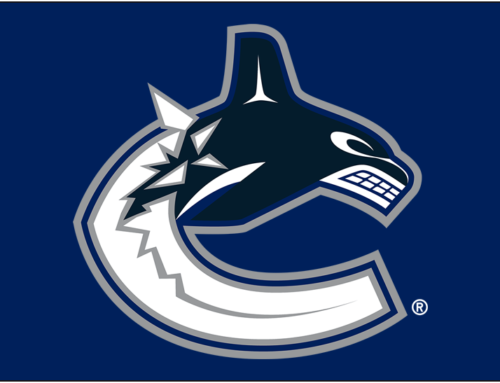32-in-32 Summer Series: Anaheim Ducks
Markus R
2025-07-21
***
The 32-in-32 Series is an annual event here at DobberProspects and has been condensed from two articles to one. The article will bring you: The highlighted team’s draft; insights into its off-season moves; looking at prospect risers, fallers and likely prospects to play NHL games; and of course, the writers’ top-20 prospects. Articles may be brought back when an important team update occurs, so check back because we plan to fill your hockey withdrawal needs all off-season!
***
Make sure to check out the Anaheim Ducks team page here: https://dobberprospects.com/team/anaheim-ducks/
***
Finishing 35-37-10 with 80 points, it’s an increase of 21 points from last season. It’s progression and quite a lot too, but do not get lost in the points. The Ducks’ underlying analytics were not much better than 2023-24. What was much better was Dostal and Gibson, the best tandem in the league. While it is cause for concern, as we’ll get into later, Head Coach Greg Cronin has been fired, so it will get better, just how much better?
It has been an interesting and hectic off-season for the Ducks. New head coach, several new veteran additions, franchise staples traded away, and currently ongoing contract negotiations with core players.
The biggest change the Ducks have made is firing head coach Greg Cronin and replacing him with a much more proven coach in Joel Quenneville. This change is significant in every way for the Ducks and any fantasy GM. Under Cronin, we did see some players make good progress in their individual games, however, Cronin was completely out of his element when it came to personnel decisions, tactics, and schemes. His defense was terrible, forcing constant man-to-man, which is an outdated tactic and not run too often in the NHL, especially not as the default defense. Same story in offense, Cronin emphasized a dump and chase transition, which became a possession and cycle-based once established in the offensive zone. To any Duck fan who watched this unfold over the last two seasons (I’m one of them….), it made very little sense as the team’s young core is gifted with speed, playmaking, and IQ. Most of the Ducks’ goals and chances came from rushes. And do not get started on the special teams, there really is nowhere but up, and with proven special team coaches now on the staff, we should expect significantly better. The coaching overhaul is a big one, and a much-needed one. With proven coaches in every position now, tactics and special teams should finally become a boon, not a detriment.
The current contract negotiation with McTavish is a bit of a worry. There is no doubt he will both be back, but Verbeek has shown he is a very stubborn negotiator and isn’t afraid to take his time, even eating into camp and pre-season time before completing a contract.
Veteran additions of Kris Krieder and Mikael Granlund should help insulate the young core with veterans who can contribute effectively.
***
NHL Draft Recap
Round 1, 10 overall: Roger McQueen, C
The biggest swing for upside in the draft, McQueen could be the biggest boom of the whole draft. A towering 6-5 center, McQueen has long been regarded as a top-tier talent, combining a great shot, elite hands at his size, vision, physical edge, and good defensive instincts. A great start to the season was ended by a lower-back injury that sidelined him for months. A brief return in March came, but the injury was re-aggravated, and McQueen missed the rest of the season.
McQueen is a dynamic offensive threat. He has pace and uses his size and reach to manipulate defenders. He’s creative both with his playmaking and shooting, catching defenders and goalies off guard. His playmaking is great, capable of accurate passes at speed and through traffic. He forechecks with edge, absorbs contact, wins puck battles, and supports his team down low. Inconsistency and decision-making remain areas for growth. Missing so much time with injury, and the potential to miss more, will set his development pace back; he’s more of a long-term project than an average top-10 pick, but if McQueen reaches his potential, he will be one of the most impactful players of the draft.
Round 2, 45 overall: Eric Nilson, C/RW
Nilson’s standout skill is his fluid, quick skating that matches well with his strong motor and good defensive awareness. He excels in supporting his defensemen down low and backchecking. Nilson drives play in transition, using quick moves and deceptions to gain the zone and initiate cycles. His ultimate offensive upside remains hard to project. He produced well in the J20, but was on a super stacked Djurgårdens team, and he often settled for perimeter plays. At the U18s, he showed more willingness to attack the middle, along with his good shot and constant playmaking threat, he could transform into a dangerous top-six player. Size, but especially strength, will be key for his long-term projection. At 6-0, 161lbs, Nilson has bulk more to handle NHL physicality. Smaller players with a profile like Nilson’s have statistically struggled to make it to the NHL, but his elite defensive instincts, skating, motor, and transition skills give him a legitimate shot at creating a path to a well-rounded middle-six player. He’s going to be a long-term project.
Round 2, 60 overall: Lasse Boelius, LHD
Boelius has earned games with Ässät’s men’s team and been the star for a rather lackluster Finnish team in international play. Skating is the core of his projection, with great mechanics, he’s able to accelerate fast and speed by forecheckers. Boelius‘s puck handling goes hand-in-hand with his skating, allowing him to avoid danger with ease. He has a clear base as a puck-moving blue liner. He often activates, joining rushes and even drives plays himself. Boelius’ skating also allows him to win races and match any footwork an attacker is trying, always able to force attackers to the outside. His U20 production was not great, and there are concerns with hockey sense. He can get rushed under pressure and misses high-value passes, instead settling for low-danger shots or simple passes. There are games where Boelius doesn’t seem to have any weaknesses, but they are far too rare at the moment. The projection relies on Boelius’s ability to develop his processing and decision-making to match his level of speed and pace. The Ducks typically develop offensive defensemen into well-rounded two-way players. Is Boelius the next of them? Either way, he is several years out before making an impact on NHL ice.
Round 3, 72 overall: Noah Read, LW
Playing for the most reputable OHL program has its benefits, but clear drawbacks. Stuck deep in the depth order, Read played 45 regular season games and all 17 playoff games in a bottom-six, speed and checking role. His game is marked by pace, always pushing the tempo with his relentless energy and physical presence. Read had a modest stat line this season, but the habits to create much more are present. It’s not rare for London Knights stuck in depth roles to fall in the draft, then perform much better the following year when they are given bigger roles. His passing, vision, and shot all look translatable, even if he’s not going to put up monster numbers, he would be able to be effective. Read has several traits to develop into a possible middle-six energy forward that can do a bit of everything. Should that be too far off, his defensive game and physical nature should help him find a role in the bottom-six. Skating is the biggest hurdle for Read at the moment. Keep an eye on him; a larger role with the Knights could help showcase his upside better.
Round 4, 101 overall: Drew Schock, LHD
Schock is a dynamic skater who loves to activate constantly. He draws in pressure, effortlessly navigates it, and finds long breakout passes. This season, Schock played an important role in the NTDP’s offense, always involved and often had the puck on his stick. His game is built on his skating, speed, and agility in all parts of the ice. He still has a way to go in development. When he fails to shake the forecheckers, he struggles to make good decisions and force passes. He also struggles at times to understand when to do what, standing too passive at times and too aggressive in others. Committed to Michigan, Schock will likely spend several years there developing his hockey sense. On a team as stacked as the Ducks are with offensive blueliners, it is hard to imagine Schock ever making it to top power play duties, but keep an eye on how his development goes at Michigan.
Round 4, 104 overall: Elijah Neuenschwander, G
Neuenschwander has been one of the best goalies in his domestic Switzerland. A big goalie at 6-4, he possesses great control over his moves and ease in tracking pucks. The foundational skills for an NHL goalie are present. His lateral movement still needs improving, and his overall development will likely take many years. The Ducks have produced many solid NHL goalies over the years. Will Neuenschwander be next in line? Don’t expect any NHL action for at least another five years.
Round 5, 136 overall: Alexis Mathieu, LHD
Big, mean, and good on his skates. Mathieu’s path and role in the NHL are already clear: a defensive throwback who is going to throw around his 6-4 frame. His style goes well with his natural aggression; Mathieu is hunting hits, sometimes to a fault even. He’s a simple defender taking the safe options; you won’t see any daring displays of skill here. Mathieu needs to work on his breakout passing and puck skills; he needs to be able to safely handle and distribute the puck under pressure. If he can develop his game that far, his natural aggression, skating, and size should give him a good shot at being a 3rd pairing defenseman or 7D. Completely fantasy irrelevant though, unless you are looking for someone to rack up hits.
Round 5, 159 overall: Émile Guité, LW
The QMJHL Rookie of the Year for 2023-24, Guité entered the draft season with a lot of expectations to establish himself as a top prospect. Needless to say, it didn’t quite go as envisioned. Guité’s production took a nosedive and never managed to recover. His shot and release remain as deadly as they were in his rookie season, and his feel for finding soft spots in cover remains good. He uses the give-and-go when entering the zone to slip under the radar and find good shooting positions. Below-average skating and strength show up consistently to hinder Guité from having an impact in each shift. One of the most prominent boom-or-bust candidates in the later rounds, should Guité establish the production and pace he was on during his rookie year, he will become fantasy-relevant. Definitely someone who could be a buy-low (or free off the wire) candidate and return on investment big time, pay attention to Guité’s upcoming season.
Round 6, 168 overall: Anthony Allain-Samaké, LHD
A Natural skater, Allain-Samaké has an impact in all areas of the ice. He is a constant activator, coming to aid the rush; he rarely shoots at the net, preferring to pass. Allain-Samaké’s vision and passing are superb at the USHL level, being one of the better rush creators and transition passers in the league. He understands the game at a tactical level, using his off-puck movements to force shifts in defense coverages to open up holes for others. Allain-Samaké is not afraid to throw his 6-2 frame around, and together with his great skating, he’s a consistent defender, stopping attackers or forcing them outside. Allain-Samaké is another long-term project; he needs to bulk up, work on his offensive game, and refine elements of his defense. Committed to Connecticut for next season, he’ll likely need to spend 3 or more seasons in the NCAA.
Round 7, 200 overall: Brady Turko, RW
Born three days away from the 2026 draft, Turko is one of the youngest players in the entire class. His pick represents a vision from the Ducks’ scouts; they are drafting him for what they project and what he could become, not what he has shown at all in the OHL so far. Standing at 6-0, he had a major growth spurt over the last two years, which helps explain his smaller size at 168lbs. The biggest wildcard of the Ducks’ 2025 draft class, treat the upcoming season as more akin to his draft year than last season. Check back in over the next season and see where Turko’s trajectory is heading. Either way, he’s several years out still.
***
Off-Season Moves
Incoming (Remaining years, AAV)
Mikael Granlund – 3 years, $7 Million
Petr Mrazek – 1 year, $4.25 Million
Ryan Poehling – 1 year, $1.9 Million
Chris Kreider – 2 years, $6.5 Million
Outgoing
Trevor Zegras
John Gibson
Brett Leason
Isac Lundeström
Robbi Fabbri
Brock McGinn
Oscar Dansk
Oliver Kylington
Josh Lopina
Dillon Heatherington
Re-Signed
Ville Husso – 2 years, $2.2 Million
Calle Clang – 1 year, $775K
Jan Mysak – 1 year, $775K
Lukas Dostal – 5 years, $6.5 Million
Drew Helleson – 2 years, $1.1 Million
Tim Washe – Currently Unsigned
Mason McTavish – Currently Unsigned
Comments
With veteran goalie John Gibson gone, it means the Ducks are handing over the reins to Lukas Dostal. General Manager Verbeek has already said he expects Dostal to start around 50 games in the upcoming season. Dostal has shown top-10 numbers in limited stretches, but as the season goes on, Dostal’s play declines. He is capable, but is he ready to shoulder a majority of the games? Time will tell. He is going to be a high-risk goalie, but if he sustains the numbers he has maintained in stretches over the last two seasons, he could be a top goalie. If you are looking to gamble with your goalies, look deeper at Dostal. For long-term leagues, there is no doubt Dostal will be the Ducks’ #1 for the foreseeable future.
Dealing Trevor Zegras to Philadelphia will remain one of the….strangest….moves by General Manager Verbeek. It’s clear he did not fit into the long-term vision, but trading him for pennies when his value is at an all-time low is a very questionable move. For a team lacking offense and reliable transition players, they just sent one of their best in both areas away. Likely to take his place is the new addition, Chris Krieder. Krieder is coming off a terrible season, which was marred by injury and whatever the Rangers were last season. The Ducks’ power play was TERRIBLE, with a new, proven coach in Jay Woodcroft taking over the power play, expect improvements, and at the center of that should be Krieder as the net front presence.
Granlund and Poehling are unknowns as to where they will end up in the lineup. If I had to guess, Granlund ends up on McTavish’s wing on the second line. Poehling will centre one of the bottom-six lines.
Mrazek will back up his fellow Czech, except around 30 starts for the veteran.
***
In the System
Risers
Tristan Luneau, RD
Luneau began the season in the NHL, but it quickly became clear he was not quite ready. After being sent down to the San Diego Gulls, it took a few games for him to find his rhythm, and then he exploded and never looked back. The Gulls, still searching for an identity, finished 28th in the league. Despite playing on a struggling team, Luneau managed to finish fourth among all AHL defensemen in total points, and FIRST in points per game.
He is an offensive catalyst, fearless, direct, and always looking to generate scoring chances. His offensive skill is clear; what can’t be seen on a scoresheet are the strides he has made defensively. Improved footwork and added muscle over the summer have made him more physical and far more engaged in his zone. In past seasons, Luneau could freeze up when reading developing plays, often standing still; those issues are almost gone now. Though there’s still room for refinement, the defensive progress is a major step forward.
Among all Ducks prospects pushing for NHL roles, Luneau is in the best position. The Ducks have a PLETHORA of left-handed defensemen prospects (13 of them to be exact), but the right side is a void in comparison. His only real competition is Ian Moore and Drew Helleson, neither is much of a threat. Luneau stands alone as the team’s top right-handed defenseman prospect and will receive development focus and opportunities that few others will.
With both Jacob Trouba and Radko Gudas still on the roster, it may be difficult for Luneau to make the NHL lineup out of camp. A Gudas or Trouba trade at some point could be likely, and when that slot opens up, it will be Luneau’s. Earning the spot as the top power play unit’s QB will be a challenge, LaCombe is established already with Mintyukov and Zellweger right behind. Either way, Luneau is someone who could become fantasy-relevant very soon as a scoring defenseman.
Stian Solberg, LD
Known for playing a style of hockey that borders on assault, Solberg is impossible to miss on the ice with his crushing checks. He should already be a top prospect on the radar for any banger league. What often goes unnoticed from the physicality is just how sneakily effective Solberg is offensively. A converted forward from his youth days, he brings an above-average understanding of offensive movement, shooting, deception, and playmaking, rare traits for a defense-oriented blueliner.
The secret may already be out after his heroic performance for Norway at the World Championship. He recorded a hat trick against the eventual gold medal-winning USA team, along with another goal and two assists across the tournament. Solberg was leaned on as Norway’s top defenseman, logging heavy minutes, including four games over 25 minutes and a massive 31-minute outing against the Americans.
Used sparingly in the SHL, his offensive production picked up significantly once he arrived in North America with the Gulls and was given a larger role. With a strong chance to lead San Diego’s blue line next season, keep close tabs on him. It could serve as a showcase for just how much offensive upside the hard-hitting Norwegian really has.
Sasha Pastujov, LW
It was a strange season for Pastujov, starting with a demotion to Tulsa in the ECHL. Typically an ECHL demotion is a bad sign for a player coming off a lacklustre AHL season, but in Pastujov’s case, it worked wonders. After a brief stint torching the ECHL, he returned to the Gulls looking like a completely different player. He scored 17 goals and 28 assists for 45 points in 43 games, good for a 1.05 points-per-game pace, the highest of any U23 player in the AHL (min. 42 games), just in front of Matthew Poitras.
The turnaround came from his improved adaptation to the AHL’s pace and the improvements he made in speeding up his own game. He played more directly, read plays better, and stayed in constant motion, issues that held him back in 2023–24.
I doubt he gets a roster spot with the Ducks out of camp, but the Ducks do still have at least one more top-six wing spot to fill in the long term, and now, Pastujov might be the betting favourite. When injuries occur, Pastujov should be one of the first called up.
Darels Uljanskis, LD
It is not often a seventh-round pick impresses in their D+1 season, but the progression Uljanskis has shown is remarkable. While still a long way from the NHL, he finished second in scoring among defensemen in the J20 league, with his offensive game continuing to develop.
Skating was a notable weakness in his draft year, but it has now improved to at least an average level. The elevated skating has led to improvements in defense all-around. His defensive game has taken a step forward, with better timing, more aggressive reads, and increased physicality. Like many Ducks prospects, he now plays more physically, consistently finishing checks and asserting himself on the ice.
Set to play for the Flint Firebirds in the OHL next season, and with Michigan in the NCAA 2026-27.
Tarin Smith, LD
Another offensive-focused left-shot defenseman showing strong progress in the Ducks system? You bet! Smith was drafted as a speculative pick after missing the entire 2022–23 season due to an ACL tear. He was a pure offensive defenseman with notable defensive struggles. This season, his game looks much more refined.
Where he once panicked under forechecking pressure, he now manipulates and navigates with poise. He actively seeks out contact, playing with more physicality, and his defensive skating has improved. In offense, he’s just as dangerous, if not better, with 60 points in 65 games, tying him for seventh among WHL defensemen.
Playing for Everett, one of the WHL’s strongest teams, definitely gave his production a boost, but the improvements to his all-around game and his growing NHL viability are real. Not sure if that will be in Anaheim, with how many left-handed defensemen they have though.
Fallers
Rowdin Dionicio, LD
Set to play in Switzerland, Dionicio surprisingly began the season in San Diego. The daring fakes and offensive instincts that made him so effective and entertaining are still very much present. Unfortunately, so are the concerns that have followed him, his poor skating, and overly risky play.
His high-risk style often created defensive liabilities, leading to turnovers and goals against. One particularly costly mistake against the Firebirds led to an eight-game benching. Discipline issues also surfaced, both with officials and on the bench. Dionicio was sent to EHC Biel-Bienne in the NL to finish the season.
There, he continued to show off his offensive gifts, putting up six assists and firing 36 shots in just nine games, averaging four shots on goal per game. This season was not necessarily a step back, but it certainly was not the step forward one would have hoped for.
Where he plays next season remains uncertain, but what he needs to improve is crystal clear: discipline, skating, and defense.
Damian Clara, G
The higher you climb, the further you can fall, and that held especially true for Clara this season. Coming off an off-season where he looked like a world-beater, his performance in the SHL exposed weaknesses in his game. To make matters worse, Färjestadens’ poor defense did him no favors, as every goalie who suited up for the team struggled.
A late-season move to Kärpät in Liiga provided some needed stability, allowing Clara to finish the year on a stronger note. He’s still a young goalie, so this dip in form isn’t overly alarming, but the upcoming season will be crucial to re-establish his trajectory and prove this year was just a blip.
Clara is set to play for Brynäs in the SHL, the very team he helped promote two seasons ago. Whether the familiar system and surroundings will aid his development remains to be seen, but I certainly hope it does.
Nathan Gaucher, C
With Gaucher, it is less about regression and more about being leapfrogged in the organization after the signing of Tim Washe. His development has been slow, hampered by a string of injuries.
Gaucher remains a defensive specialist who plays with heart on every shift and hits anything in sight. He ended the year on a scoring streak after returning from injury.
Is it a sign of things to come? We will find out this upcoming season.
*
Expected to start in the NHL:
Leo Carlsson
Cutter Gauthier
Olen Zellweger
Sam Colangelo
Drew Helleson
Tim Washe
Likely to see NHL action in order of likelihood:
Nikita Nesterenko
Tristan Luneau
Ian Moore
Sasha Pastujov
Beckett Sennecke*
Nathan Gaucher
*Assistant GM Madden said that Sennecke is “one good off-season away”, referring to the need for Sennecke to bulk up more. At the moment, it’s hard to know how that is going, but the possibility is there that he starts in the NHL.
***
Top 20 Prospects
This section is intended to paint a picture of the Anaheim prospects whose current trajectory projects them to make the most positive fantasy impact at the time that they reach the NHL. Arrival date and NHL certainty have been taken into consideration; however, potential upside is the most important factor in determining this list.
1. Leo Carlsson
2. Cutter Gauthier
3. Olen Zellweger
4. Tristan Luneau
5. Becket Sennecke
6. Roger McQueen
7. Sasha Pastujov
8. Sam Colangelo
9. Lucas Pettersson
10. Stian Solberg
11. Yegor Sidorov
12. Eric Nilson
13. Maxim Masse
14. Tarin Smith
15. Rodwin Dionicio
16. Emil Guite
17. Lasse Boelius
18. Damian Clara
19. Darles Uljanskis
20. Noah Read
***
Final thoughts
New coaching staff, two key players traded, and one of the youngest cores in the NHL, this season could go in many directions for the Ducks.
An optimist might expect a more capable coaching staff to implement tactics that suit the roster, rather than forcing players into a system that does not match their strengths, as was previously the case. A pessimist has already written this team off.
With veteran additions, natural development, improved special teams, and a new system, I do expect progress. Some of their top players could become fantasy-relevant this season. If the Ducks start hot, many of their players will be snapped off the wire quickly.
Make sure to check out the Anaheim Ducks team page here: https://dobberprospects.com/team/anaheim-ducks/
***
Thanks for reading!
Markus R


